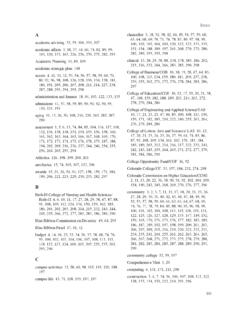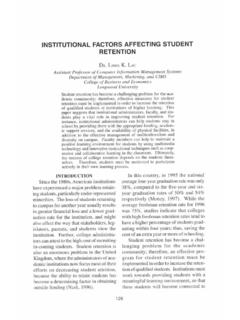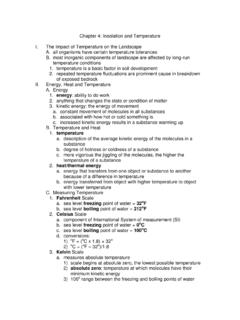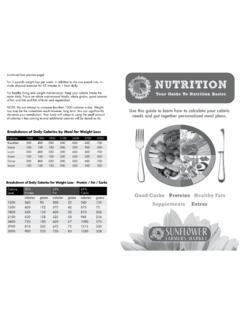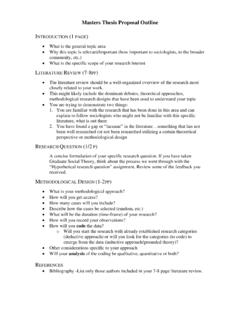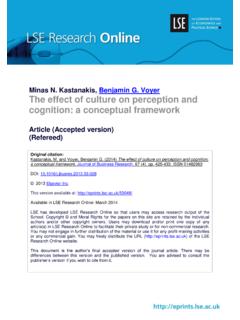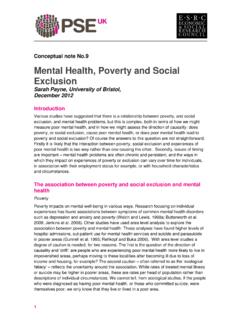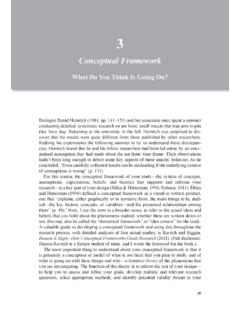Transcription of Literature Reviews made easy - UCCS Home
1 Literature Reviews . MADE EASY. SKILLS DEVELOPMENT SERIES. WHERE DO I BEGIN? WHAT IS A Literature REVIEW? We will talk about both process And product WHAT IS A LIT REVIEW? Definition: A lit review surveys, summarizes, and links information about a given topic. A good lit review assesses this information and distills it for the reader. WHAT IS A LIT REVIEW? The best lit Reviews tell a good story. Regina Winters A lit review provides context and background for your work. It's an essay, a synthesis of information relevant to your work.
2 WHAT DOES A LIT REVIEW DO? Clarifies understanding of the field Explains the rationale for your research Places your research within a broader context Evaluates the results of previous research Defines key concepts and ideas Identifies research in related areas that is generalizable or transferable to your topic Identifies relevant methodological issues WHAT A LIT REVIEW IS NOT. A lit review is NOT an annotated bibliography Annotated Bibliographies: Cite various works Summarize major points of those works Talk about the importance of each work to the reader or larger community Discuss gaps in the Literature or shortcomings of the works Are useful tools Are first steps to a good lit review.
3 Don't stop there! WHAT'S THE PROCESS? Define/refine topic Determine approach Research effectively Read critically Analyze and evaluate Take great notes Be organized Draft written product Edit and refine DEFINE/REFINE TOPIC. What's your current knowledge base? Do you know what you don't know? Don't feel bad that's often the case . Do get help! This might be an iterative process, but it's easier if you begin focused and with some general knowledge already. DETERMINE APPROACH. Develop a set of questions to be applied to all articles How will you structure your lit review?
4 Chronologically Author Thematically By relationship to your own work RESEARCH EFFECTIVELY. Tabby Farney is your best friend! Mine references from sources, look for repetitions and Reviews Use high quality sources Use a variety of sources Connect the dots YOU MAY KISS A LOT OF FROGS. When you're gathering information for your lit review, you won't use everything you gather use the best of the best of the best! Regina Winters ANALYZE AND EVALUATE. What is your research question and how does this material relate?
5 Are there foundational articles/seminal works which must be included? How is the topic framed? Are there fringe works that should not be included? Is there a central debate that should be acknowledged and addressed? Where is the topic headed in the future? READ CRITICALLY. What is the source, the claim, and the conclusions of the material? Perspective and/or bias Reason(s) for publishing Significance of findings What are the assumptions and evidence? Is the methodology valid? Flawed reasoning or fallacies Alternative explanations Omissions How does it relate?
6 What does it mean? TAKE GREAT NOTES. Highlighting is good for skimming Margin notes suggest your analysis and connections of material Outlines may be useful for complex or important works Spreadsheets or grids help track numerous sources across consistent variables or metrics Checklists help track progress and connections Summaries with additional notes from your own analysis and processing and written in your own words help cut down transaction costs when reading and reviewing many sources TRACK INFORMATION CONSISTENTLY.
7 BE ORGANIZED. DRAFT WRITTEN PRODUCT. A list of who said what is the starting point, not the final product Tell the story, make your case Use your own words Write to your audience Make connections for your readers Cite accurately A lit review should provide a conceptual framework. Dean Schwartz CONSTRUCTING THE PRODUCT. Introduction Topic and importance Use facts History and/or background Narrows topic Talks about implications What will this section say? How will you say it? CONSTRUCTING THE PRODUCT.
8 Sections help with navigation Start by painting the big picture by theme Discuss aspects using works Start with large or important works Discuss more detailed studies as needed and appropriate Provide assessment about quality Overall and specific Gaps, new directions, info needed? EDIT AND REFINE. Let it sit Get outside opinions and assistance Don't rush this step SOME EXAMPLES. Source: Neuman, W. Lawrence. (2003). Social research methods: qualitative and quantitative approaches, 5th ed, Allyn and Bacon, Boston.
9 #Exampleofagoodandbadreview Bad review Sexual harassment has many consequences. Adams, Kottke, and Padgitt (1983). found that some women students said they avoided taking a class or working with certain professors because of the risk of harassment. They also found that men and women students reacted differently. Their research was a survey of 1,000 men and women graduate and undergraduate students. Benson and Thomson's study in Social Problems (1982) lists many problems created by sexual harassment.
10 In their excellent book, The Lecherous Professor, Dziech and Weiner (1990) give a long list of difficulties that victims have suffered. Good review The victims of sexual harassment suffer a range of consequences, from lowered self- esteem and loss of self-confidence to withdrawal from social interaction, changed career goals, and depression (Adams, Kottke, and Padgitt, 1983; Benson and Thomson, 1982; Dziech and Weiner, 1990). For example, Adams, Kottke, and Padgitt (1983) noted that 13 percent of women students said they avoided taking a class or working with certain professors because of the risk of harassment.

